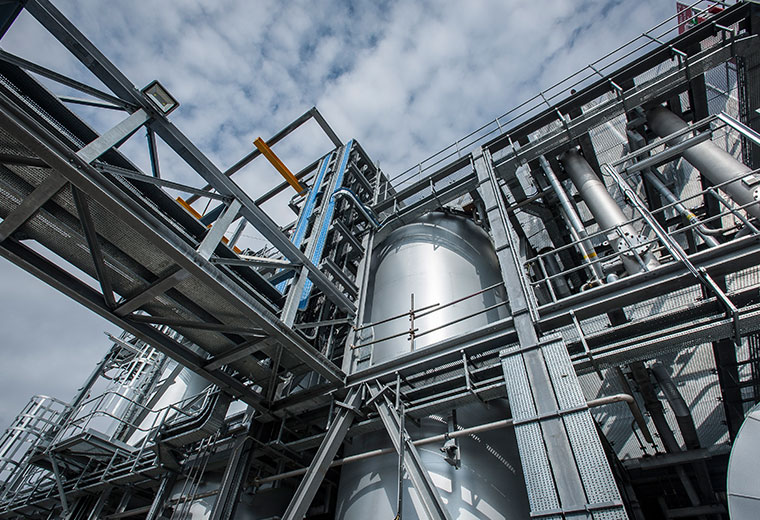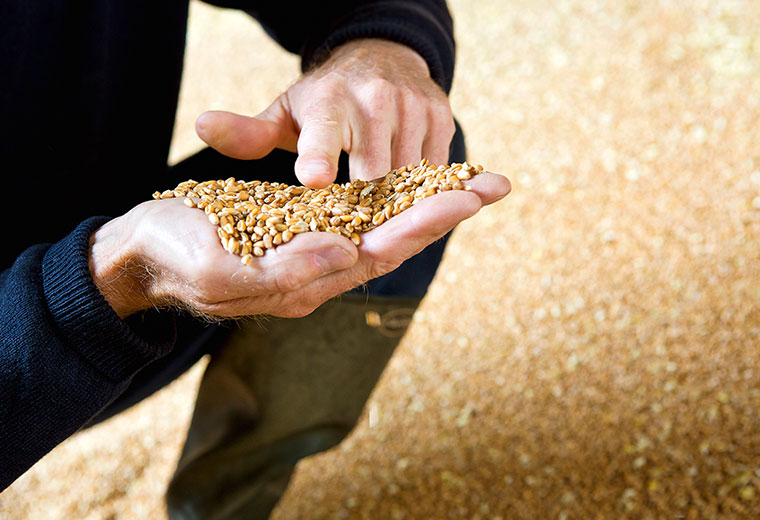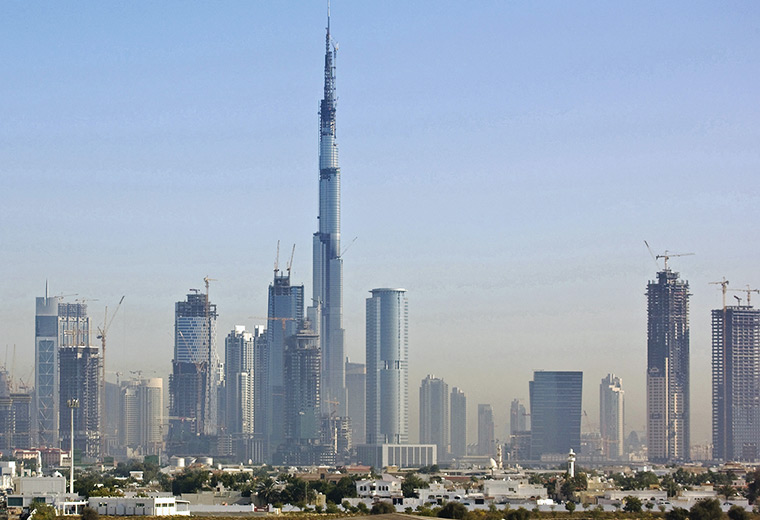Our contribution to a sustainable future
Our innovations contribute to a sustainable future. We support the United Nations in the implementation of the U.N. Sustainable Development Goals (SDGs), which create the framework for sustainable business practices at the economic, social and environmental levels. In drafting these development goals, the United Nations worked together with nongovernmental organizations, international trade associations, employee representatives, scientists, policymakers and industry. BASF was also actively involved in the development of the SDGs as a member of working groups.
Our contribution to a sustainable future
BASF’s contributions to the U.N. Sustainable Development Goals
On the following pages, we share how BASF contributes to the SDGs: with responsible production, solutions for clean water, products for sustainable agriculture and to combat hunger, and with contributions to infrastructure, industrialization and innovation.
Energy-efficient production: BASF uses a biocatalytic production process for acrylamide.
Bio-acrylamide
Sustainable, improved production
Greater supply security combined with more efficient and environmentally friendly production: BASF switched over its production process for the monomer acrylamide to a modern enzyme-based process. Acrylamide is used for the production of water-soluble flocculation aids in wastewater treatment and papermaking, as well as mineral processing and enhanced oil recovery. The biocatalytic production method results in less waste than the copper catalysis previously used. The process takes place at room temperature and under normal atmospheric conditions, resulting in energy savings and greater environmental compatibility. It also generates fewer by-products. BASF has been producing bio-acrylamide in Suffolk, Virginia, since 2014 and started up a new bio-acrylamide plant in Bradford, England, in 2016. A third plant is being built in Asia and should start up in 2017. With three state-of-the-art production facilities located directly in key markets, BASF is able to quickly and sustainably meet regional demand.
Energy-efficient production: BASF uses a biocatalytic production process for acrylamide.
Milestone: To bolster its worldwide polyacrylamide production network, BASF started up the new world-scale production plant for bio-acrylamide in Bradford, England.
All-rounder: Acrylamide is used for the production of water-soluble flocculation aids.
Production in North America: BASF has been producing bio-acrylamide in Suffolk, Virginia, since 2014.
-

Energy-efficient production: BASF uses a biocatalytic production process for acrylamide.
-
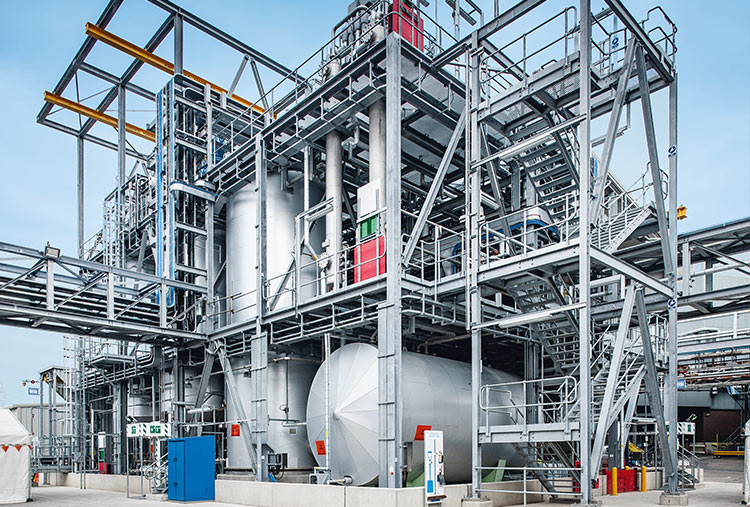
Milestone: To bolster its worldwide polyacrylamide production network, BASF started up the new world-scale production plant for bio-acrylamide in Bradford, England.
-
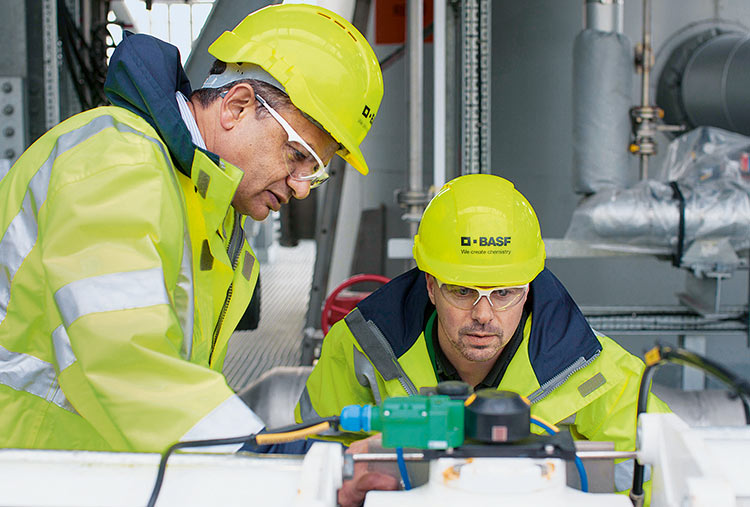
All-rounder: Acrylamide is used for the production of water-soluble flocculation aids.
-
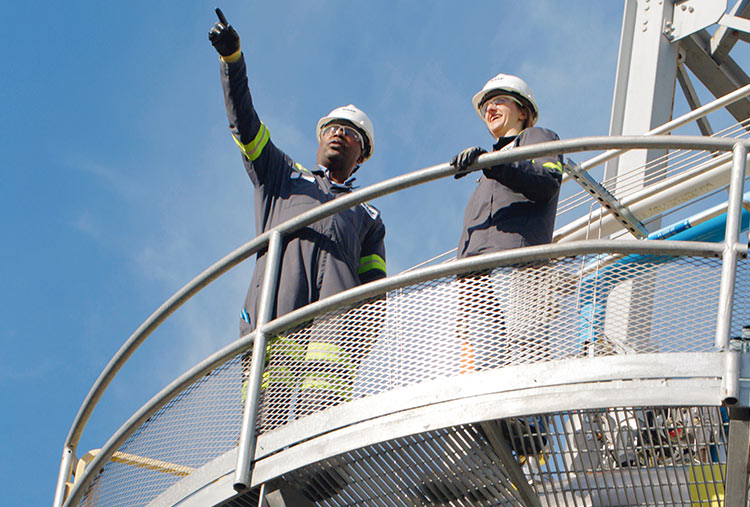
Production in North America: BASF has been producing bio-acrylamide in Suffolk, Virginia, since 2014.
Modern automotive engineering: Lighter vehicle components reduce fuel consumption and carbon emissions.
Acrodur
Naturally lighter
“Weight savings” is a key term in modern automotive engineering, as lighter vehicle components reduce fuel consumption and carbon emissions for the end customer. To produce lightweight, innovative auto parts made from environmentally friendly substances, manufacturers need the right materials from the supplier industry. Such as BASF’s binding agent Acrodur®: The acrylic resin can be processed in a simple and especially environmentally friendly manner; the only by-product generated is water. Acrodur® is used, for example, in collaboration with partners to create a new vehicle roof frame using renewable hemp. The natural fiber construction is strengthened with Acrodur®, making the roof frame up to 40% lighter compared with regular steel components.
Modern automotive engineering: Lighter vehicle components reduce fuel consumption and carbon emissions.
Lighter weight: The binding agent Acrodur® 950 L provides the strength and heat-resistance needed in the world’s first vehicle roof frame made entirely of natural fibers.
Environmentally friendly: Hemp plants are a renewable raw material for automotive engineering.
Binder: The acrylic resin Acrodur® can be processed in a simple and especially environmentally friendly manner.
-

Modern automotive engineering: Lighter vehicle components reduce fuel consumption and carbon emissions.
-
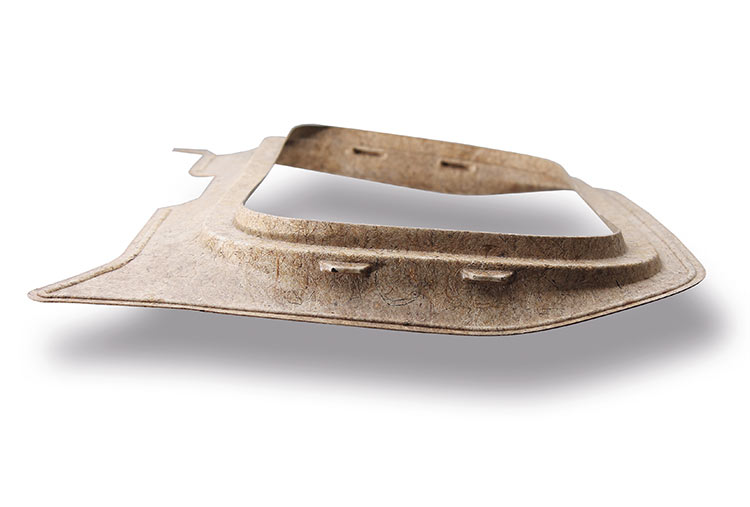
Lighter weight: The binding agent Acrodur® 950 L provides the strength and heat-resistance needed in the world’s first vehicle roof frame made entirely of natural fibers.
-
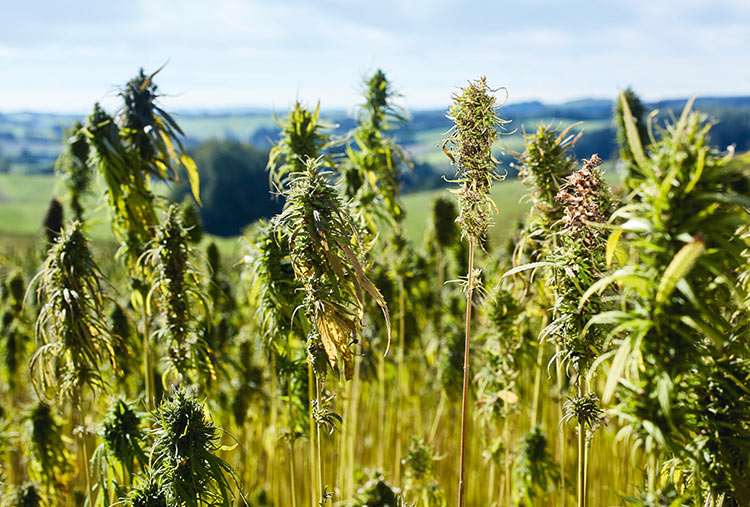
Environmentally friendly: Hemp plants are a renewable raw material for automotive engineering.
-
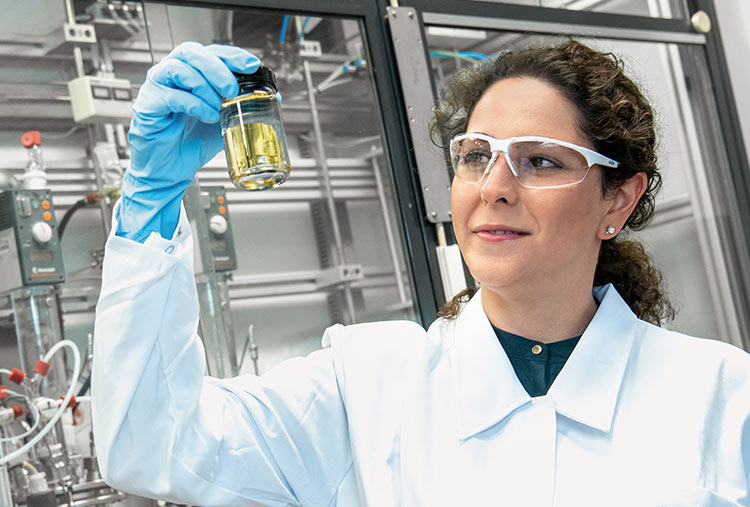
Binder: The acrylic resin Acrodur® can be processed in a simple and especially environmentally friendly manner.
Clean water: Dr. Kevin McPeak is a scientist in residence at the BASF Sustainable Living Laboratory at Louisiana State University. He researches portable filtration and disinfection systems for drinking water – harnessing visible sunlight.
Living Lab
Purified by the sun
Clean water is essential for our health. We need new and simple solutions to produce safe drinking water – especially in developing countries where traditional, energy-intensive methods of water treatment are difficult to put into practice. At the United States’ Louisiana State University, new ideas have room to develop: As the major sponsor, BASF provided the university’s College of Engineering with $1 million to help construct the BASF Sustainable Living Laboratory. The laboratory, in operation since fall 2016, focuses on researching sustainable solutions for global challenges. Dr. Kevin McPeak is the lab’s first scientist in residence. He and his team are working on portable filtration and disinfection systems for drinking water. “We are investigating light-driven oxidation processes that safely and effectively inactivate pathogens,” McPeak explains. Instead of the ultraviolet light used in traditional methods for sun-supported water treatment, he harnesses visible sunlight. Ultraviolet light makes up a mere 5% of the solar spectrum. By contrast, visible light accounts for more than 40% of the spectrum, which means that McPeak harnesses several times as much energy than traditional methods. This, in turn, allows for quicker and more effective disinfection. With his research, McPeak wants to create a simple and inexpensive solution for developing countries to transform polluted water into drinking water.
Clean water: Dr. Kevin McPeak is a scientist in residence at the BASF Sustainable Living Laboratory at Louisiana State University. He researches portable filtration and disinfection systems for drinking water – harnessing visible sunlight.
Simple instead of energy-intensive: Especially in developing countries, new solutions are needed to produce safe drinking water.
-
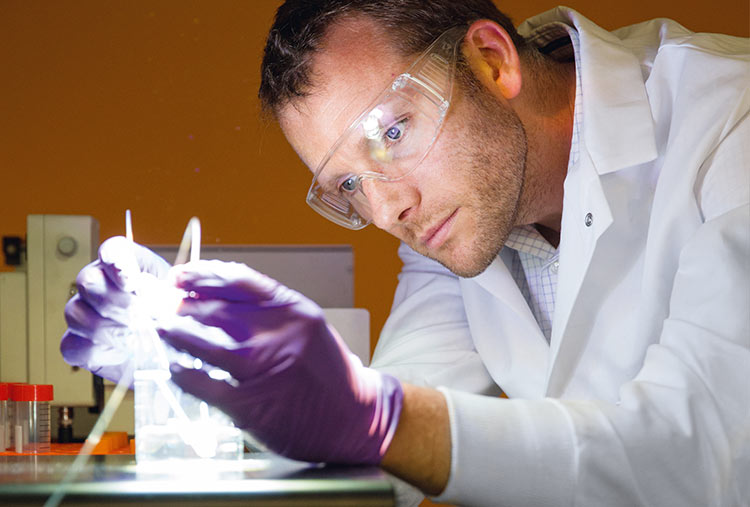
Clean water: Dr. Kevin McPeak is a scientist in residence at the BASF Sustainable Living Laboratory at Louisiana State University. He researches portable filtration and disinfection systems for drinking water – harnessing visible sunlight.
-

Simple instead of energy-intensive: Especially in developing countries, new solutions are needed to produce safe drinking water.
A better energy footprint: Dr. Peter Schmittel is manager of the BASF wastewater treatment plant. He and his team work on improving the facility’s energy footprint – with great success.
Wastewater treatment plant
Tiny helpers, big impact
BASF’s wastewater treatment plant is one of the largest in Europe. It purifies nearly 100 million cubic meters of wastewater from BASF’s production each year, in addition to another 20 million cubic meters of wastewater from the German towns of Ludwigshafen, Frankenthal and Bobenheim-Roxheim. The core of the plant is biological purification: Bacteria transform polluted water into sewage sludge, carbon dioxide (CO2) and water. Keeping the wastewater moving and the bacteria supplied with oxygen requires a lot of energy. Without changing water volume or quality, BASF has increased the plant’s energy efficiency by 28% compared with 2012 and reduced costs by around €3 million over this period. In addition, 18,000 fewer metric tons of CO2 are emitted annually. “Efficient biological purification is the key to our success. Solid matter is already better separated in the precleaning phase, reducing not only the amount of pollution in the biological pools, but also the energy requirement for aeration,” explains plant manager Dr. Peter Schmittel. BASF also reduced the bacteria concentration by 50%. The remaining bacteria are better supplied with oxygen, which enables them to work even more efficiently.
For more on the water treatment plant, see basf.com/wastewater-treatment-plant
A better energy footprint: Dr. Peter Schmittel is manager of the BASF wastewater treatment plant. He and his team work on improving the facility’s energy footprint – with great success.
Largest water treatment plant on the Rhine: The BASF wastewater treatment plant in Ludwigshafen, Germany, purifies almost 100 million cubic meters of the company’s production water every year. Even wastewater from the surrounding towns and communities is purified.
-
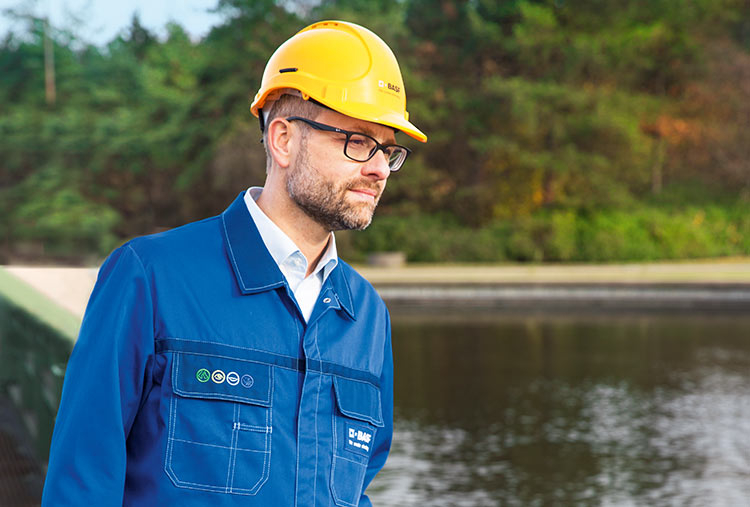
A better energy footprint: Dr. Peter Schmittel is manager of the BASF wastewater treatment plant. He and his team work on improving the facility’s energy footprint – with great success.
-
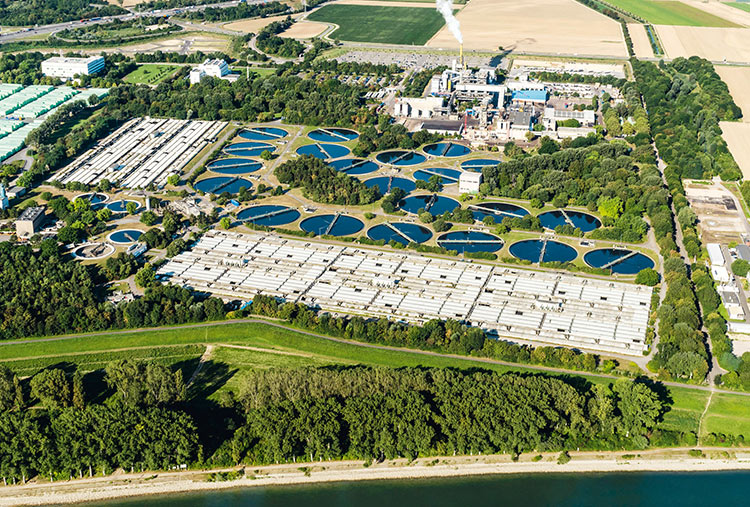
Largest water treatment plant on the Rhine: The BASF wastewater treatment plant in Ludwigshafen, Germany, purifies almost 100 million cubic meters of the company’s production water every year. Even wastewater from the surrounding towns and communities is purified.
More than nutrients: Positive effects on animal feed and the environment are important features of feed additives such as Natuphos® and Amasil®.
Animal feed
Improved feed conversion
Sustainability is a core criterion in the development of BASF’s feed additives portfolio. This means we not only evaluate additives based on their nutritional value, we also consider additional positive effects on animal feed and the environment. In pig and poultry feeding, the enzyme Natuphos® improves digestion of important nutrients such as phosphorus, proteins, calcium and zinc. The feed is more environmentally friendly, as the animals excrete less phosphorus, reducing the impact on water. Thanks to Natuphos®, the animals are also better able to utilize the energy from their food, reducing the overall feeding costs. In pig farming, adding the organic acid Amasil® lowers the pH value of the pigs’ food, creating an environment that is inhospitable to harmful bacteria. The lower amount of bacteria consumed reduces the animals’ microbial load, improving their vitality. Furthermore, Amasil® extends the food’s shelf life, enabling farmers to provide their animals with the needed nutrients in high quality.
More than nutrients: Positive effects on animal feed and the environment are important features of feed additives such as Natuphos® and Amasil®.
Enzymes for sustainable agriculture: The animal feed additive Natuphos® helps farmers raise healthy animals.
Improved pig feeding: Adding the organic acid Amasil® lowers the pH value of the pigs’ food, creating an environment that is inhospitable to harmful bacteria.
-
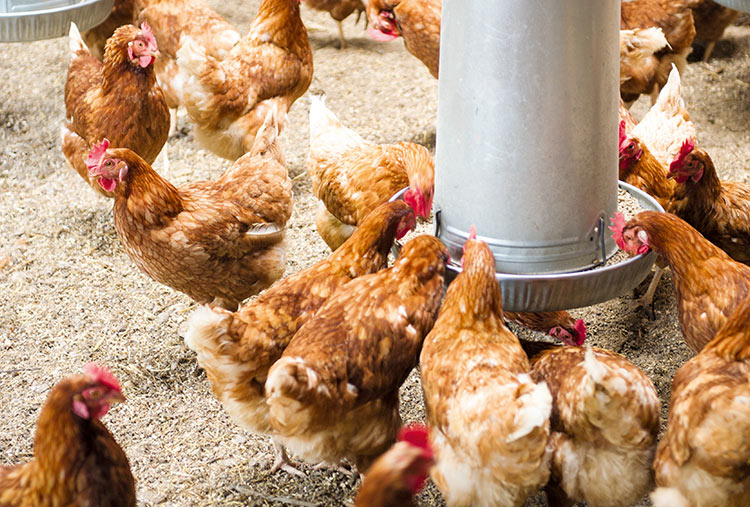
More than nutrients: Positive effects on animal feed and the environment are important features of feed additives such as Natuphos® and Amasil®.
-
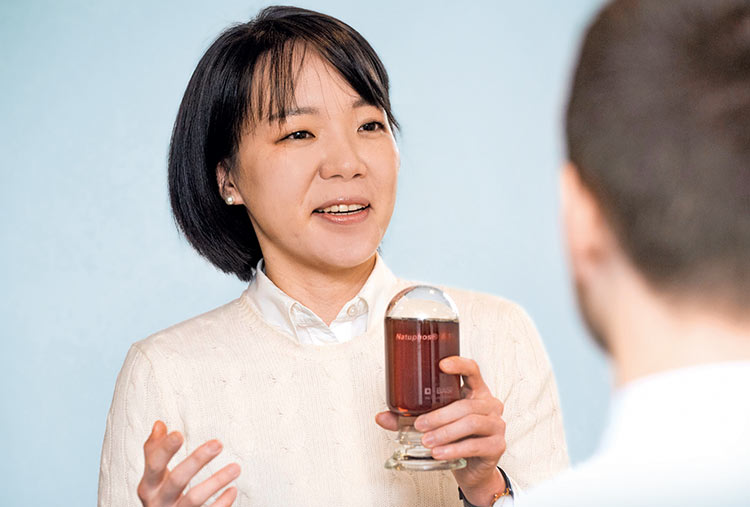
Enzymes for sustainable agriculture: The animal feed additive Natuphos® helps farmers raise healthy animals.
-
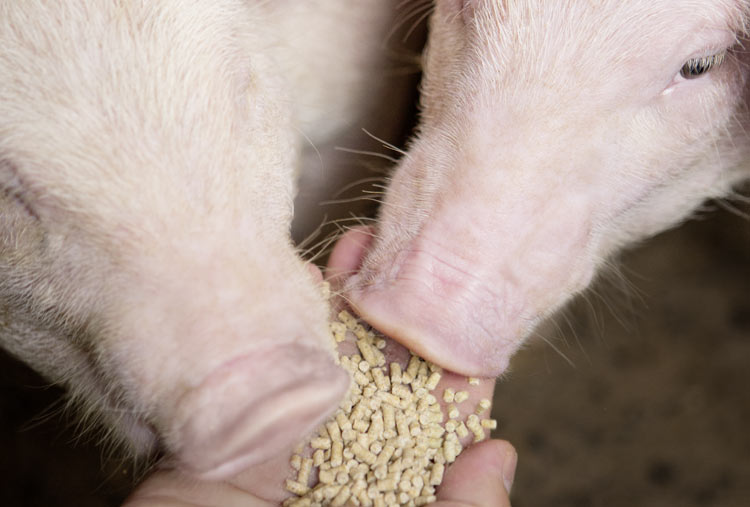
Improved pig feeding: Adding the organic acid Amasil® lowers the pH value of the pigs’ food, creating an environment that is inhospitable to harmful bacteria.
Protected seeds: Seed treatments and refining support plants' undisturbed development from the very beginning. This later increases yields.
R&D
Knowledge on a global scale
BASF opened a new research and development center for biological crop protection and seed solutions in Limburgerhof, Germany. Together with other research sites in Brazil, Argentina, France, England, South Africa, China, Australia, the United States and Canada, Limburgerhof is part of an international network of expertise. Its goal is the global exchange of research results that have been tried and tested in different climate zones and under various local parameters. In this network, BASF researches naturally occurring organisms and cultures and their potential use in biological crop protection. This is how we pursue our goal of supplementing our classic portfolio of chemical crop protection and offering farmers an even more comprehensive product portfolio. We combine knowledge of biological microorganism fermentation with chemical formulation expertise and develop new solutions for better seed treatment. Farmers then profit from seeds that provide plants with all-around protection from the very beginning. Sowing is simulated and optimized in order to provide farmers with the best possible application and handling.
Protected seeds: Seed treatments and refining support plants' undisturbed development from the very beginning. This later increases yields.
Networked research: The new research and development center in Limburgerhof, Germany, is part of our global network of R+D sites and testing centers for biological crop protection and seed treatment solutions.
Best possible treatment: Thanks to better seed treatment, plants are provided with all-around protection from the very beginning.
-

Protected seeds: Seed treatments and refining support plants' undisturbed development from the very beginning. This later increases yields.
-

Networked research: The new research and development center in Limburgerhof, Germany, is part of our global network of R+D sites and testing centers for biological crop protection and seed treatment solutions.
-

Best possible treatment: Thanks to better seed treatment, plants are provided with all-around protection from the very beginning.
Smart Manufacturing: The steam cracker in Ludwigshafen has state-of-the-art information and automation technology at its disposal.
BASF 4.0
Driving digital transformation
The BASF 4.0 project team is evaluating possibilities for more intensive use of digital technologies and business models, and drives the digital transformation of BASF. Under the banner “Smart Manufacturing,” BASF implements digital technologies and applications in its plants with the goal of making production more efficient and even safer. This includes the “predictive maintenance” approach. A model-based analysis of the data can, for example, better predict the optimal point in time for maintenance measures, reducing unscheduled repairs and shutdowns and optimizing coordination between maintenance and production processes. The steam cracker – the heart of production in Ludwigshafen – already uses predictive maintenance through the application of state-of-the-art information and automation technology. Several thousand sensors track process data, like pressure and temperature, around the clock in order to monitor and optimally direct the plant. Another Smart Manufacturing project is “Augmented Reality.” Plant employees are supported in their work with industry-specific tablet devices that provide access at any time to digital information. Working processes are made more transparent and efficient.
Smart Manufacturing: The steam cracker in Ludwigshafen has state-of-the-art information and automation technology at its disposal.
Digital and mobile: Special tablet devices give plant employees access to information at any time.
Delhi Metro: BASF developed customized concrete waterproofing solutions for the subway system of the Delhi, India, metropolitan region.
Delhi Metro
Expertise for big visions
Delhi is one of the largest cities in the world. The pulsing metropolis of over 16 million people is one of the most important centers of commerce and trade in India. After the expansion of its metro, over 270 stations along approximately 330 kilometers of rail will run under the surface of the city. To date, only the cities of London, Seoul, Tokyo and Beijing boast larger subway networks. Construction projects on this scale would hardly be possible without innovative and robust construction materials. For the expansion of the Delhi Metro, the BASF team in India won the project tender with their customized concept proposal, including the use of BASF waterproofing solutions for concrete. BASF’s Master Builders Solutions line of concrete solutions are currently used in underground transport systems all over the world, such as in China, Singapore, the United States and Poland. Railway tunnel construction is another area that uses BASF’s construction chemicals solutions. In Switzerland, for example, concrete additives and cement-based injections for waterproofing were employed in building the world’s longest rail tunnel, the Gotthard Base Tunnel, and its feeder, the Ceneri Base Tunnel. Especially in megaprojects, the high performance of BASF construction chemicals in sometimes extremely demanding conditions is an important distinguishing feature.
For more on our construction chemicals, see master-builders-solutions.basf.com
Delhi Metro: BASF developed customized concrete waterproofing solutions for the subway system of the Delhi, India, metropolitan region.
Megaproject: After the expansion of the metro in Delhi, India, over 270 stations along approximately 330 kilometers of rail will run below the city.
Ceneri Base Tunnel: The railway tunnel in Switzerland’s Ticino canton will serve as a feeder for the Gotthard Base Tunnel. It is expected to open at the end of 2020.
-
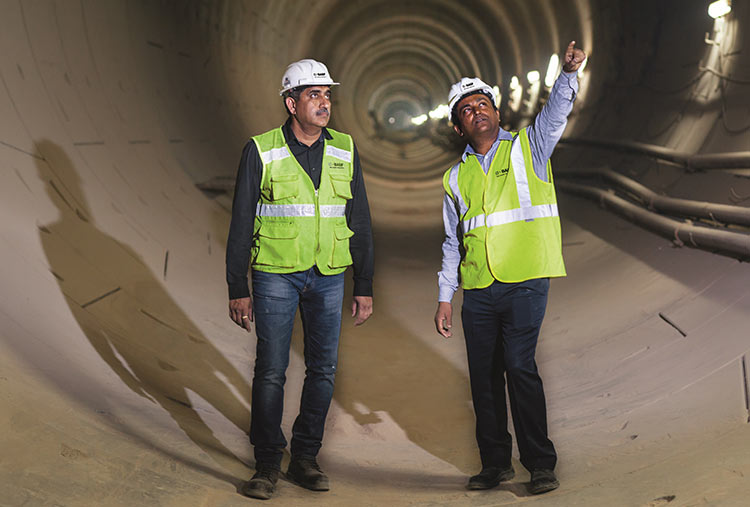
Delhi Metro: BASF developed customized concrete waterproofing solutions for the subway system of the Delhi, India, metropolitan region.
-

Megaproject: After the expansion of the metro in Delhi, India, over 270 stations along approximately 330 kilometers of rail will run below the city.
-
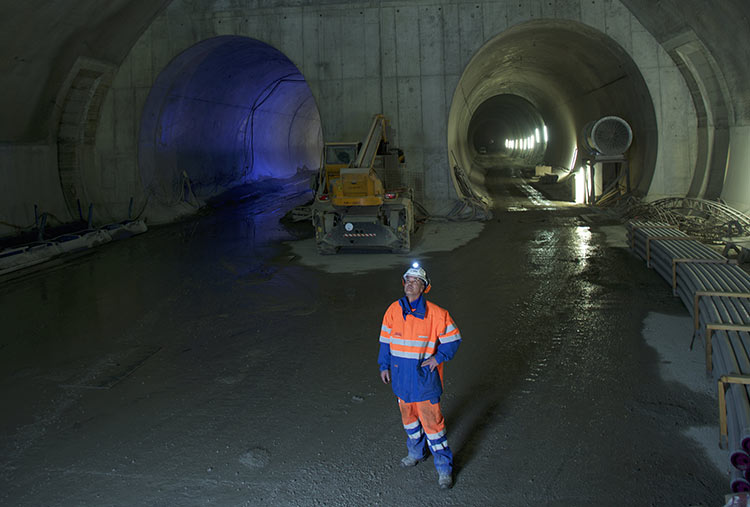
Ceneri Base Tunnel: The railway tunnel in Switzerland’s Ticino canton will serve as a feeder for the Gotthard Base Tunnel. It is expected to open at the end of 2020.

